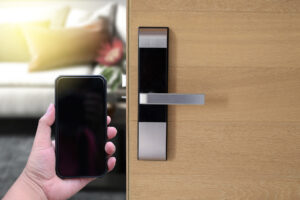The SIP trunking services market is exploding. According to Transparency Market Research, the worldwide market for SIP trunking services is projected to grow as much as 13% per year until 2030 and reach $35 billion in total market value. SIP trunking has been changing the way that companies and individuals communicate in all verticals, and hotels are no exception. If you’re thinking about transitioning your hotel to a SIP trunking system, here’s what you need to know.
What is SIP Trunking?
The term “session initiation protocol” refers to a means of transferring data over the internet. Phone lines have been essentially analog copper cables that branched throughout the country and ended in sockets in your walls for the last 120 years or so. Those terminals were known as “trunks,” and each one was associated with a unique phone number.
SIP trunks, by contrast, are entirely virtual and don’t correspond to a particular location or piece of hardware. When a user places a phone call, a session is initiated that connects to another phone number and sends voice data back and forth.
As you might expect, virtual trunking gives your hospitality phone systems a whole new level of flexibility. You can send the front desk phone to a traveling manager, handle guest calls from a remote location, or automatically shift the hotel’s main number based on local time zones.
The Difference Between SIP Trunking and Analog Trunking
The main advantage of analog trunking is stability — some analog phones don’t even require power, allowing you to connect to emergency services or other lines in the event of a total power outage.
SIP trunks, on the other hand, operate over your internet connection, need both energy and a reliable internet connection. A high-speed internet connection isn’t hard to come by these days, thanks to the widespread availability of broadband connections, but there are a few instances where an analog phone is more trustworthy.
How Much Bandwidth Do You Need For SIP Trunking?
In order for SIP trunking to run smoothly, you need to plan for the maximum number of calls your hotel phone system will need to handle at any given time. Your phones will be sharing bandwidth with the rest of your hotel’s internet activity, so you’ll want a fast connection to ensure optimal call quality.
Luckily, phone calls use very little data. If all 250 lines in your hotel were being used simultaneously, you’d still only use about 25 megabits per second of bandwidth — roughly the same as a single Ultra HD Netflix stream.
Given the internet speeds available in most hotels (and the unlikelihood of so many simultaneous phone calls), your voice-over-internet-protocol (VoIP) calls will likely be a tiny fraction of your total bandwidth needs.
Track your call traffic during the busiest days of the year as a reference point, and then plan for higher usage than that. It’s always best to leave extra headroom than to compromise on bandwidth.
The Benefits of SIP Trunking For Hotels
The greatest possible guest experience will be provided by a digital PBX system that is powered by VoIP technology and uses SIP trunking to produce a robust, flexible, high-tech solution that unites all of the hotel’s departments. Here are a few of the advantages SIP trunking can provide for your hotel.
- Cost: SIP trunking systems over VoIP connections offer significant savings over analog systems. Long-distance calling is a particular area where cost savings are realized, so if your hotel has a lot of international guests, you’ll see significant savings.
- Flexibility: SIP trunking, as previously said, allows you to relocate phone lines from one location to another, add new lines, and remove unused lines seamlessly. You can produce completely functional digital phone numbers that can be answered from anywhere if your hotel adds more facilities, hires new staff, or relocates its headquarters.
- Quality: analog phone lines are affected by distance, the quality of the copper wire, nearby electrical activity, and even solar activity, resulting in deteriorated voice quality. On a digital system, you only need a strong internet connection at each end of the line for clear call quality.
- Unified communications solutions: modern hotel guests use emails, text messages, apps, and interactions through your website to make and update bookings. Your phone records should be unified with every other form of communication through a CRM so that you can keep track of all guest information, no matter where it came from.
- Internal efficiencies: VoIP systems can unite your internal departments, making your staff much more efficient. For example, you can set up your software such that when housekeeping finishes with a room, the room’s status is automatically updated at the front desk and new guests can be checked in immediately. You can even enable guests to order room service online or on apps.
Getting Started With SIP Trunking
If you’re ready to get started with SIP trunking, Phonesuite can help. Our phone systems are designed exclusively for hotels, and we’ve installed them in more than 6,500 hotels in the last 30 years. We’ll examine your hotel’s existing systems, needs, and priorities to design a system that adds functionality and saves you money. Curious about the cost? Talk to Phonesuite today!



